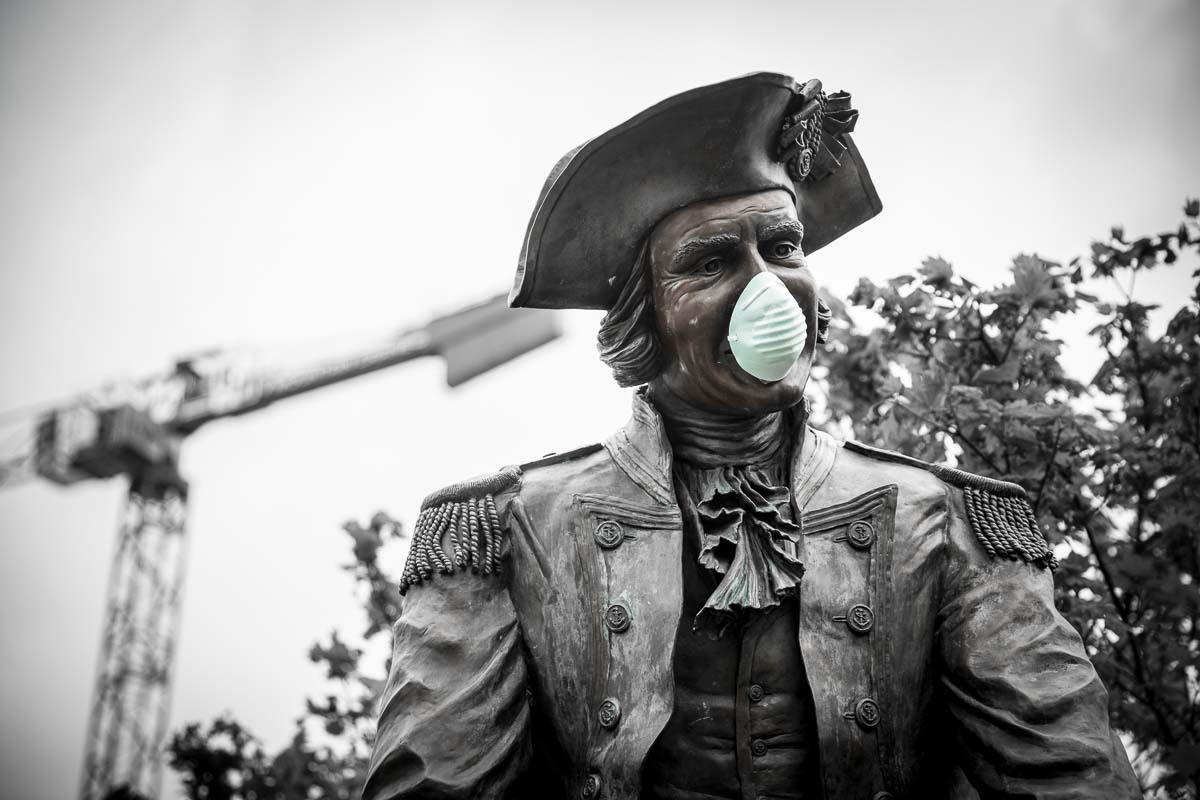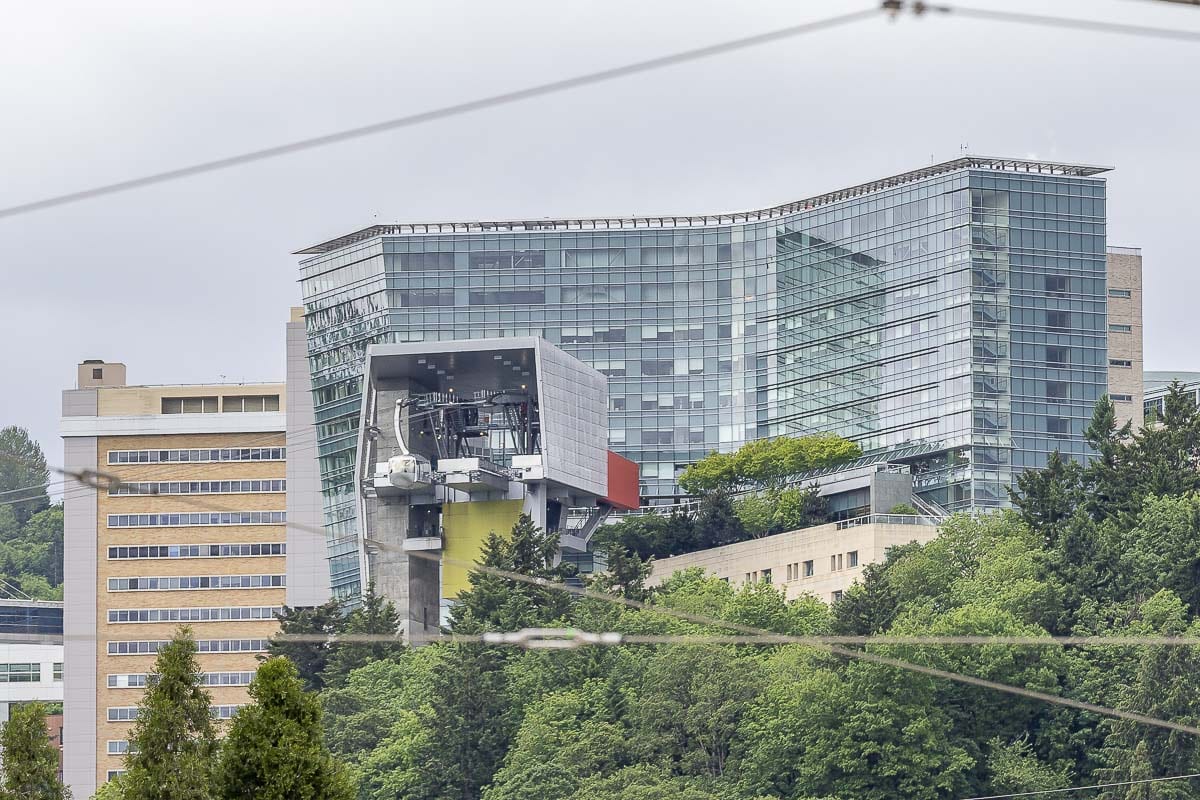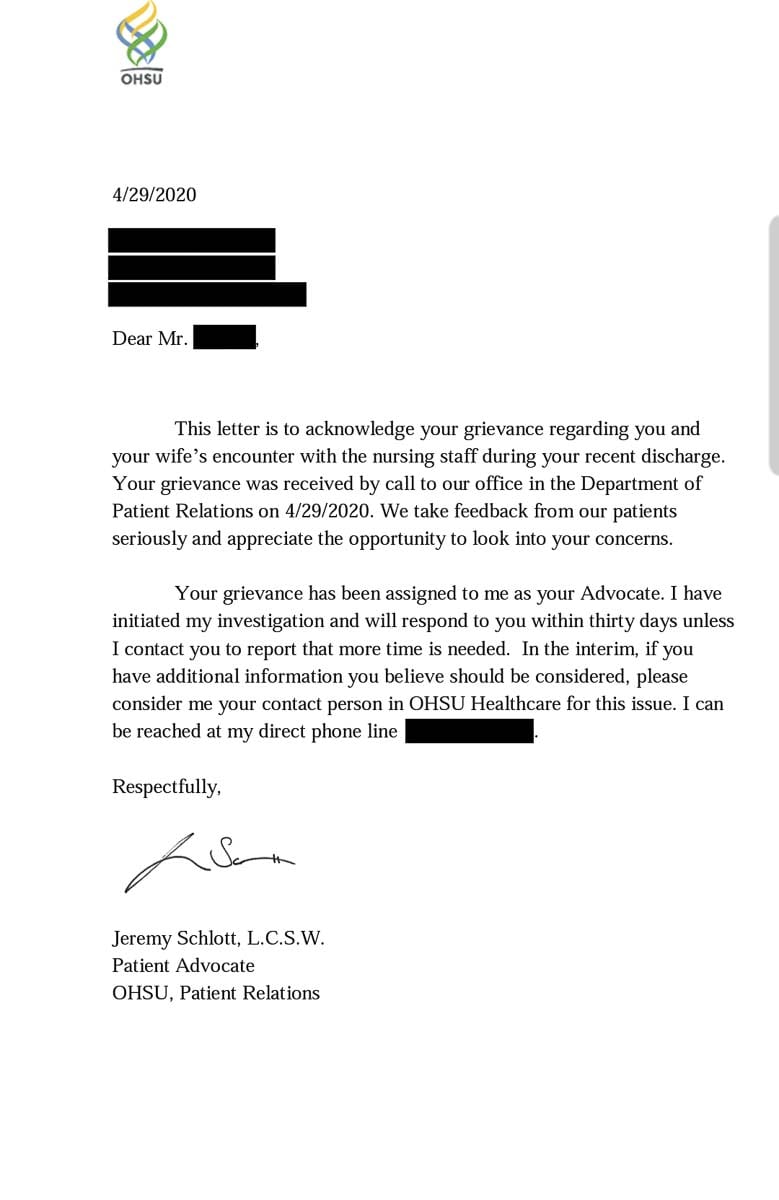Two sides of the medical system, the virus versus cancer and the human cost
CLARK COUNTY — Death motivates people. The fear of it, and the acceptance of it; they both motivate. Run from it, embrace it, mitigate it, stare it down; all are things people do in the face of death.
Death is a hot topic right now. The endeavour to restrain it has led to varied, but equally colossal measures on the parts of nations and leaders. Death, as we know, has many names: age, violence, car accidents, cancer… coronavirus.

According to Worldometer, nearly 300,000 people have met the death named COVID-19. Some 1.6 million more walked away after a bout with that death.
But could other casualties exist in between the lines? Ones not written by numbers, but by memories, moments and missed opportunities?
For Jake and Cheyenne they do.
Cancer versus COVID
They were married in May. In July, Jake drove himself to a hospital and checked himself in. He didn’t come out for six months.
To protect their identities, only first names will be used.
Jake has battled multiple sarcoma tumors in his spinal cord and brain for the better part of the last year. Cheyenne has been by his side through it all. They are a team. In sickness and in health.
During those six months of care within Oregon Health & Science University (OHSU) and Legacy Good Samaritan Hospital, Cheyenne stayed in the hospital with her husband, or made the often long drive from Vancouver to Portland.
“With the cancer being a sarcoma, it is a rare cancer and a lot of them just form on connective tissue,” Jake said. “Being on the elbow or something like that, it’s no big deal, they can remove it, but it being in my spinal cord puts me in the category of the 1 percent of the 1 percent of the 1 percent. It’s extremely rare. So then that causes pressure on my spinal cord meaning incomplete quadriplegia. So just going from, you know, walking to not … “
Jake, now in a wheelchair from loss of mobility, still maintains a heart for his wife and his friends. He treats every conversation and encounter the same, even if others respond differently. He loves people.
After the long days and nights of dozens of MRIs, surgeries and isolation, Cheyenne finally got to bring Jake home with her.
For the first couple months, life began to feel more normal, or as much as possible. Friends were more present, and there were no more hospital machines next to the bed.
Then the world decided it needed some isolation too.
When the lockdowns and stay-at-home orders began rolling out, Jake and Cheyenne say it felt very excessive and hard to swallow. Now, even home, friends were distant.
“For us, you know, I think coronavirus, COVID, whatever you want to call it is pretty small fries,” Cheyenne said. “Obviously there’s gonna be people that are offended to hear that because they’re very concerned about it and might know someone that was directly affected by it. But I mean, statistically it’s debatable, with around 1 percent mortality rate. Where what we’re facing is 100 percent mortality rate, it’s just a matter of when.”
Jake still travels to OHSU to receive treatments and surgery if necessary. On April 27, he had one such operation. A shunt would have to be placed from his brain to his stomach to relieve pressure; his first brain surgery.
Cheyenne was admitted, wearing a mask over her nose and mouth, to the hospital with Jake, to assist with his mobility. They were allowed to wait in the hospital together before the surgery.
“They said, ‘Oh we don’t have a problem with you being here. If they let you in it’s fine,’” Cheyenne said. “Then they took him back for surgery. They even said, ‘We will call you and let you know when you can come see him in post-op,’ which is what we’re used to with surgeries.”
Cheyenne helped Jake transfer to the hospital bed for the operation. She then waited in a public area within OHSU. Wearing a mask. No one bothered her. But no one called her either.
“So about 8:45 I started to panic and was worried that he didn’t come out. I mean, this is his first brain surgery, so I was worried maybe he didn’t come out of it okay,” Cheyenne said, pushing back tears. “Then he made a nurse call me right after 8:45 and said that he was already moved to his new room which is super weird.”
When she proceeded back towards Jake’s room near post-op, she was not stopped. When she arrived, the doctor was there explaining how the operation went well. The charge nurse on duty explained to Cheyenne that due to COVID-19, she would not be able to stay overnight, but could take her time helping him get settled in for the night. She said “thank you,’’ and did just that before returning home to Vancouver.
The next morning, Jake was set to be discharged before lunch. Cheyenne arrived early to help him pack his things, and then take him home. She was admitted to the hospital, wearing a mask and again met no resistance on her way to Jake’s room.
Upon arriving, the doctor was there again, and spoke with Jake and Cheyenne about discharging them by 12:15 p.m. The doctor left. Then came back.
She told Cheyenne that the charge nurse had stopped her in the hall and told her to tell Cheyenne she needed to leave. A few minutes later, the charge nurse came in herself. She told Cheyenne it was, “very dangerous for her to be there.”
Cheyenne started packing for Jake faster.
“At the end of the day most people have understood the common sense that there’s so many reasons that I need Cheyenne throughout the day and they’ve accepted that,” Jake said. “And then this nurse at OHSU … ”
It was 11:52 a.m. At 12:02 p.m. two security officers entered the room, with four more outside, and escorted Cheyenne out of the hospital. Less than an hour later, Jake was discharged and met Cheyenne outside.
OHSU declined to comment on the specific incident, and could not confirm or deny the amount of security or police that escorted Cheyenne out of the building.

Responding to criticism
“It’s not like I was going to stay there all day. I still feel like I should have been able to stay there all day. I felt like I was there to help him discharge and it was going to be an hour or less,” Cheyenne said. “I’m already in his room, I’m not going anywhere else. The fact that [the nurse] gave me eight minutes between the first time I saw her and the second time I saw her with six cops with her, was a little over the top and a little power hungry move.”
Jake and Cheyenne have filed a formal grievance with OHSU which is currently being processed by a patient advocate. The final results of the investigation will be released to them in 30 days.
OHSU’s formal comment was as follows:
OHSU understands that family support is an important part of healing; however, to ensure patient, visitor and staff safety during the COVID-19 pandemic, OHSU is not allowing hospital visitors, with the following exceptions:
- One healthy person age 18 or older at a time (no more than two per day), may visit:
- A child or baby
- A patient in labor or who just had a baby
- A patient with limited comprehension, if their care team thinks it is needed for their treatment and safety
- Any patient, temporarily, to learn discharge instructions for when they leave the hospital
- Two healthy people aged 18 or older per day may visit a patient at the same time during end-of-life care.
- Friends and family are important. Connecting with loved ones often via phone or through electronic communication is encouraged.
Jake and Cheyenne admit their views on the coronavirus may be unpopular. They are not seeking to bash or belittle those with different viewpoints. In fact, they want to talk to them. They said they want a change of perspective and a policy of consistency.

“The main reason I’m frustrated with this whole situation is because I had a surgery, and it didn’t even seem like that was the priority at the time for the nurses,” Jake said. “My recovery didn’t seem like the priority. Getting Cheyenne out of there was like the biggest concern in the world. People really need to reevaluate what they’re focusing on.”
“My frustration through all this is what’s being deemed essential and what’s not,” Cheyenne said. “That someone’s health and their recovery and their care is essentially not being deemed essential. Whereas, wearing a mask and following the rules and trying to stop coronavirus, which hasn’t even hit us very hard here in Clark County, is being made a top priority. And being in the hospitals, they’re empty being in the emergency rooms, they’re empty.
“Having medical appointments cancelled because of coronavirus where you’re facing cancer, you know, it doesn’t really seem like an equal scale. And then for coronavirus to be the one that’s tipping and winning … It just seems wrong.”
Jake and Cheyenne said they are still very appreciative and happy with the care they have received in other departments at OHSU, such as radiation.
Playing side B of the same record
Melanie Ausmus was diagnosed with COVID-19. Then she got pneumonia. Then she beat it.
In March, Melanie, who lives in Washougal, was rushed to the hospital with symptoms resembling a blood clot.
“The Lord works in mysterious ways,” she said.
Upon arriving, she was cared for by nurses and doctors at PeaceHealth Southwest Medical Center.
“I was one of the very lucky ones that didn’t get it as bad as some people did,” Melanie said. “I was having some trouble breathing. I was running high fever, but it just felt like a really bad flu that you’ve had over the years, you know, I’m 55.”
Her husband was not allowed to stay with her. Neither was her son. Or anyone.
“I’ve been in the hospital several times. I have four kids, and you know, I’ve had different surgeries on things. I want to say this was one of the best times,” she said. “But all I could do is FaceTime with my husband and I would do that several times a day, and it made him crazy. I mean he hated it. He’s always there for me. We’re best friends. We never argue. We do everything together. And I mean, it was just awful.”
In spite of the challenges, Melanie said she received phenomenal care from the staff at PeaceHealth Southwest. She is now on the mend completely, and has since learned that her husband actually had COVID-19 as well, but had no symptoms. Her son was not tested, but believes he had it as well.
Melanie, who works for Clark County’s Board of Equalization, is now working from home again. She said she believes that the virus was here long before January. Many in the healthcare field have echoed this belief in recent weeks, as contact tracing continues to ramp up.
“It looks to me like it really is just definitely affecting the older folks over 70. So you know, you worry about that,” Melanie said. “I know people just need to stay safe, but man, we need to get back to social and businesses going and wherever we can do these things, get things back to kind of normal.”
The lesser of two evils is still evil
Where does this leave us? Hundreds of thousands of deaths, negative experiences, positive experiences, death, life, and everything in between. Who is right?
The answer does not lie in this article. Nor does it exist in the news feeds of social media. Many a false equivalency has been made thus far. That shall not be done here.
Here is where the human cost may be displayed.
“I feel like people are being lost in the chaos and people are being lost in fear,” said Cheyenne. “The care and treatment of people is being lost in fear.”
This reporter has spoken to several more people in Clark County recently. People who are expecting their first child. Husbands cannot hear heartbeats. They must wait outside.
“This is wrong,” one pregnant woman told me.
Death motivates people. It’s motivating billions of people to stay home. It’s motivating others to stand in protest. It’s motivating some to wear a mask to save their neighbor. It’s motivating others to sign petitions to save the economy.
Death motivates people, but fear must not.
“We will not walk in fear, one of another. We will not be driven by fear into an age of unreason, if we dig deep in our own history and our doctrine and remember that we are not descended from fearful men. Not from men who feared to write, to speak, to associate, and to defend causes that were, for the moment, unpopular…. There is no way for a citizen of the Republic to abdicate his responsibility.”
Edward R. Murrow, 1954




